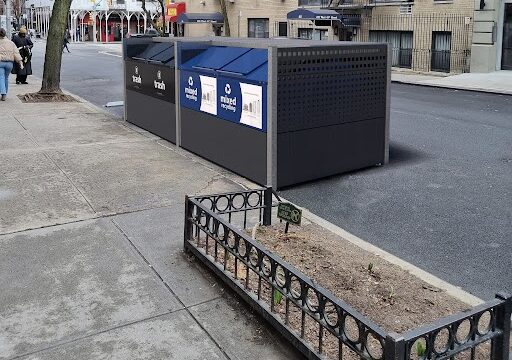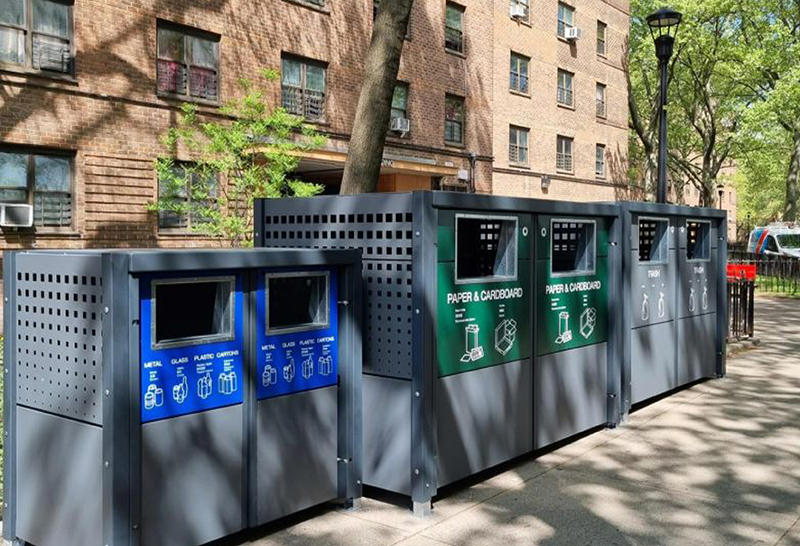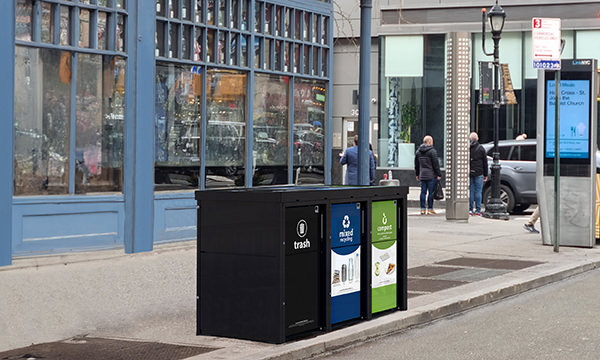

Making the Move to Containerized Trash and the Benefits for Local Communities
Mounds of unsightly trash bags stacked on sidewalks awaiting pickup have been a common sight throughout cities across America for many years, leading to accompanying issues such as split bags leaking onto the street, foul odours, and attracting rodents to a ready food source. Fortunately, a number of cities are starting to embrace the concept of trash containerisation in an effort to make trash bag mountains a thing of the past.
Containerization can be defined as the storage of trash in a secure receptacle in order to reduce the visibility of trash in public spaces and restrict contamination, aiding collection systems. Containerization can take the form of individual bins, an effective solution for residents in low-density neighbourhoods, or shared containers placed curbside within easy access of buildings for use by multiple residences, typically utilised in high-density neighbourhoods.
Cities across Europe have set the standard for trash containerization, utilising a combination of both individual bins and shared containers of various types, including hoist-lifted, side-loaded, and rear-loaded, to meet residential requirements. This multifaceted approach to containerization is common in urban environments to meet the varying characteristics of different communities.
Containerization has the potential to solve a number of waste management problems for local communities, such as reducing issues surrounding wind-blown litter and illegal dumping, which contribute negatively to neighborhoods and local communities. From a visual perspective, containerization improves the streetscape of a local community and is critical for ensuring safe, clean streets and better public health in the overall environment.
Further benefits of trash containerization include:

Alongside these local community benefits, it is essential to consider the challenges that can arise from trash containerization, such as population density and the infrastructure of the built environment, weather and climate, available curb space, collection frequency and fleet requirements. Through strategies based on effective planning and research, these challenges can ultimately be managed and overcome.
For New York City, studies into containerization over a 6 month period have helped to establish it as a feasible solution to the rodent and vermin issues caused by large piles of loose trash and dirty street conditions. New initiatives have since been developed on the back of these studies, with a view to implement them across the many neighbourhoods and communities in the city.
In their widely-anticipated report, The Department of Sanitation recently laid out a vision for how to containerize as much of the city’s trash as possible, as part of efforts to tackle vermin contamination head-on by removing their food source. Over the past several months, 3 distinct projects have been developed and developed across residential, commercial and public housing locations as part of this shared vision.
Collection services in NYC are provided by collective efforts from the Department of Sanitation, private haulers and New York City Housing Authority (NYCHA). The latest DSNY pilot, a $5.6m initiative, will see wheeled containers rolled out across 10 high-density residential blocks and 14 public school buildings in the city.
Many of NYC’s residents have welcomed the DSNY’s effort to advance containerized collection, with the main opposition for the containerization pilot from the city’s car-owning minority. The pilot would require the overhaul of 150,000 curbside spots in residential neighborhoods, but this account for just 5% of the 3m parking spots in the city, an area equivalent to 12 Central Parks.
The report found that containerization, provided through either large stationary bins for multi-family properties or individual wheeled bins, could provide a viable waste management solution for close to 90% of the city, depending on the density of the specific community. Shared containers alongside a doubling of the collection frequency would be necessary for high-density communities, which currently comprise around 40% of the city, in order to prevent side waste and ensure cleanliness, with reports stating that the containers would take up less than 25% of curbside space.
As part of the city’s containerization vision, the NYCHA recently announced progress on their own pilot project, Clean Curbs for All, a collaboration with WasteTech LLC to keep a 3,650 tons of trash off the curb over a 2-year period, taking influence from the European approach to waste containerization and collection. The pilot scheme is guided by commitments in NYCHA’s Sustainability Agenda, developed to re-envision waste management and recycling across their properties.
Commencing in the first half of 2024, $1.7m of funding will see the placement of an estimated 70 containers at 5 NYCHA developments in South Brooklyn, serving around 4,000 residents, with the use of a hoist-collected potentially accumulating 33.5 daily tons of material. The scheme is said to have the potential to cover a third of NYCHA’s portfolio, focusing on sites where larger containerization is unfeasible.

As part of the move to containerized trash, NYCHA has also piloted metroSTOR enclosures as part of efforts to better manage the storage of residential trash and recyclables. Clear, color-coded graphics that help to reinforce the waste diversion message, combined with waste-stream specific apertures at a convenient, accessible height, make it as easy as possible for residents to recycle and dispose of their trash correctly without the need to handle unsanitary bin lids.
Containerized trash offers a multifaceted approach to waste management for local communities, enhancing the streetscape and local environments by reducing litter, promoting public health, and addressing challenges like rodent contamination.
New York City’s Department of Sanitation’s response to population density, infrastructure, and urban logistics provide a framework for how to effectively overcome these challenges in urban environments. Pilot projects, like the Clean Curbs for All program by NYCHA, offer further insight and draw inspiration from European practices that have been successful for over 2 decades to meet diverse community requirements.
Ultimately, containerized trash demonstrates its potential as a feasible and effective strategy for enhancing waste management practices in local community environments.



